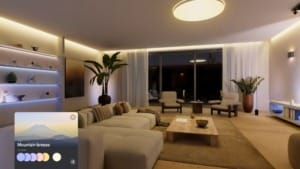Meta to launch smart glasses with built-in display priced at around US$800
Meta is preparing to launch Hypernova smart glasses with a built-in display, priced at around US$800, set to compete with iPhones.

Meta is preparing to release its next-generation smart glasses, which are expected to feature a built-in display and retail at around US$800. The device, currently under development with the codename “Hypernova,” is set to arrive later this year and could be positioned as a direct competitor to Apple’s iPhone and other mobile devices.
Table Of Content
Pricing strategy aims to boost adoption
Over the past few years, the market for extended reality (XR) devices has experienced rapid growth, with prices increasing in line with technological advancements. Apple’s Vision Pro sells for US$3,500, while Meta’s Quest Pro launched at US$1,500. Display-equipped smart glasses from rivals such as Xreal and Viture are generally available in the US$400–600 range.
Initial estimates had suggested that Meta’s Hypernova glasses might cost between US$1,000 and US$1,400. However, Bloomberg reports that Meta has decided to lower the price to approximately US$800, accepting slimmer margins to encourage wider consumer uptake. “Meta recently figured out a way to slash the price for consumers down to about $800, I’m told. The move stems in part from the company accepting lower margins to boost demand — a common tactic for new products,” Bloomberg noted.
By pricing the glasses at a level similar to that of Apple’s iPhone 16, and possibly the upcoming iPhone 17, Meta appears to be positioning the device as a smartphone alternative.
Features of the Hypernova smart glasses
Unlike dual-display smart glasses produced by RayNeo, Xreal, and Viture, Meta’s Hypernova will use a single display located in the lower portion of the right lens. This design is reminiscent of Google Glass, which used a similar approach. According to Bloomberg, “Information will only be displayed in front of the wearer’s right eye and will appear most clearly when they are looking downward.”
The glasses will run on Qualcomm silicon and support apps for photography, media playback, maps, and notifications. The display is designed to provide quick access to essential information without overwhelming the user’s field of vision.
Meta has also incorporated gesture-based controls through a neural wristband, which will be bundled with the glasses. This wristband will enable users to interact with the device using wrist gestures and hand movements, similar to the gesture controls already available on devices like the Samsung Galaxy Watch 8. Additional inputs will be managed via tap and swipe functions along the side frame of the glasses.
Competition and future potential
The Hypernova smart glasses will operate on a customised version of Android, though there may not be a dedicated app store on the device. Instead, the system is expected to rely on the Meta View companion phone app for app integration and notification management. This approach will make it crucial for Meta and Google to work out seamless support for responding to phone-based app notifications.
Google is also developing its own AR glasses using the Android XR platform, which will likely compete directly with Meta’s offering. Bloomberg reports that “the new version will continue to rely heavily on the Meta View phone app,” signalling that software integration will remain central to the device’s success.
The Hypernova smart glasses are expected to launch within the next month. Market observers will be watching closely to see how Meta approaches artificial intelligence integration, particularly in comparison to Google’s Gemini-powered wearable platform.













